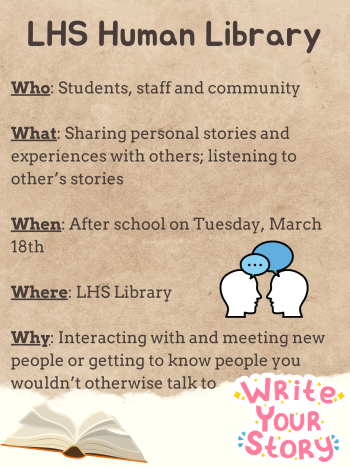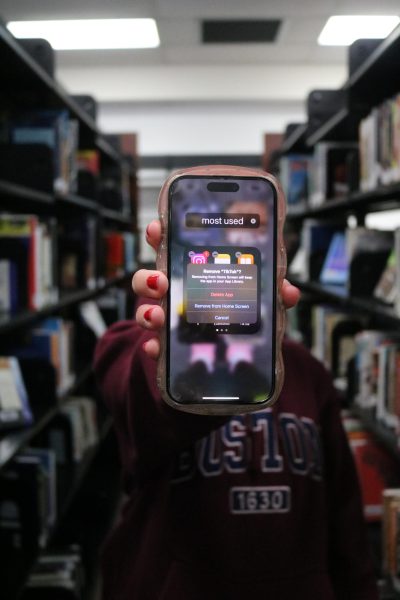Green Dot training begins for some students
Green Dot is a program that LHS is participating in to end bullying, and it teaches people how to be an effective bystander. Dr. Brenda Nelson brought this movement to LHS and some students will become leaders. Green Dot posters can be seen throughout the school to promote this program.
Health and wellness coordinator Dr. Brenda Nelson, along with other teachers and administrators, have brought the Green Dot initiative to LHS.
Green Dot focuses on violence prevention, especially “suicide, workplace and street harassment, bullying, and harassment based on ethnicity or religion,” according to the website of Alterstic, a foundation that has helped spread the Green Dot program.
The first step for LHS to become a Green Dot school was to educate the faculty and staff about the initiative. Currently, 18 adults are fully trained leaders and the whole staff has learned the basic goals and ideas of Green Dot.
On March 9, some LHS students of all grades were invited to attend a Green Dot training session, which educated students about how to not be a bystander and how to spread positivity around LHS.
Kathryn Hay, a junior, was one of the students selected to attend the training. She explained that “it trained you to [have] an active role in your school against bullying and watch out for people who [are] victims of sexual violence or relationship violence and just knowing what to say in response to that.”
Green Dot was started in 2006 at the University of Kentucky as a sexual assault and stalking prevention program. As the initiative gained success, other universities began to adapt the program, and the message has spread from there to high schools, middle schools and even elementary schools.
As sexual assault is a growing issue on college campuses, many schools have looked for ways to prevent it. Green Dot has been one of the most effective answers. A study done by the University of Kentucky found there was a “40 percent reduction in self-reported frequency of total violence perpetration at Green Dot schools.” This statistic, along with other research about the success of Green Dot, motivated the administration to bring the program to LHS.
The idea of Green Dot is to spread positive actions. “If you imagine a map of the school or community, a red dot is a moment where someone is hurt in some way. A reactive green dot is when [a bystander] notices the red dot happened and does one of three things: directly [intervening], distracting, or [delegating] by telling a teacher or reporting it,” Dr. Nelson explained. The end goal is to cover all red dots with green dots and create a “green” school.
The three different options Green Dot gives to help end violence intrigue students.
“For shy people like me, it can be hard to directly confront bullies. The other options, such us delegate or distract, are options that appeal to me,” said senior Grace Kennedy, who attended the training on March 9.
Hay believes the foundation of Green Dot is what makes it so effective: “It’s such a simple message: you see a red dot action and try to make it green to make LHS a safe place. It’s something everyone can apply to their life.”
Starting next fall, every student — seniors and juniors first, followed by underclassmen — will learn about the basics of Green Dot in small-group information sessions. Additionally, 10 to 20 percent of the student body will go through a day long bystander training session every year.
“[Students] are the ones who see most of the bullying, whether it’s in the cafeteria, online, or outside of school,” said Dr. Nelson. “Adults aren’t always there, so it falls on the students.”
The sexual assault prevention aspect of Green Dot is very important to Kennedy.
“I don’t see sexual assault here, but next year when I go to college, I might, and it’s important to know how I can help,” she said.
This aspect of Green Dot teaches students to be on the lookout for sexual violence and use the bystander training to try to directly stop the assault by distracting or delegating the task to a third party. These methods have proved to work effectively across the country, and Dr. Nelson and the LHS administration hope educating students can help them in their future.




![Mr. Abullh Ali, manager/assistant, helps open Queen Yemeni Coffee in downtown Libertyville at 606 North Milwaukee Ave. With the help of employees such as manager and LHS senior Yousef Taha, they are able to bring the Yemeni and Ethiopian culture to Libertyville by using their Queen spices, cinnamon and cardamom in their drinks such as Adani Chai, which is inspired by Sheda, the Queen of Yemen and Ethiopia. “The history of our coffee [is] a long history and we believe that Yemen and Ethiopia started the coffee and we are bringing something unique to the community,” Mr. Ali said.](https://www.lhsdoi.com/wp-content/uploads/2025/04/Photo-1-600x400.jpg)



